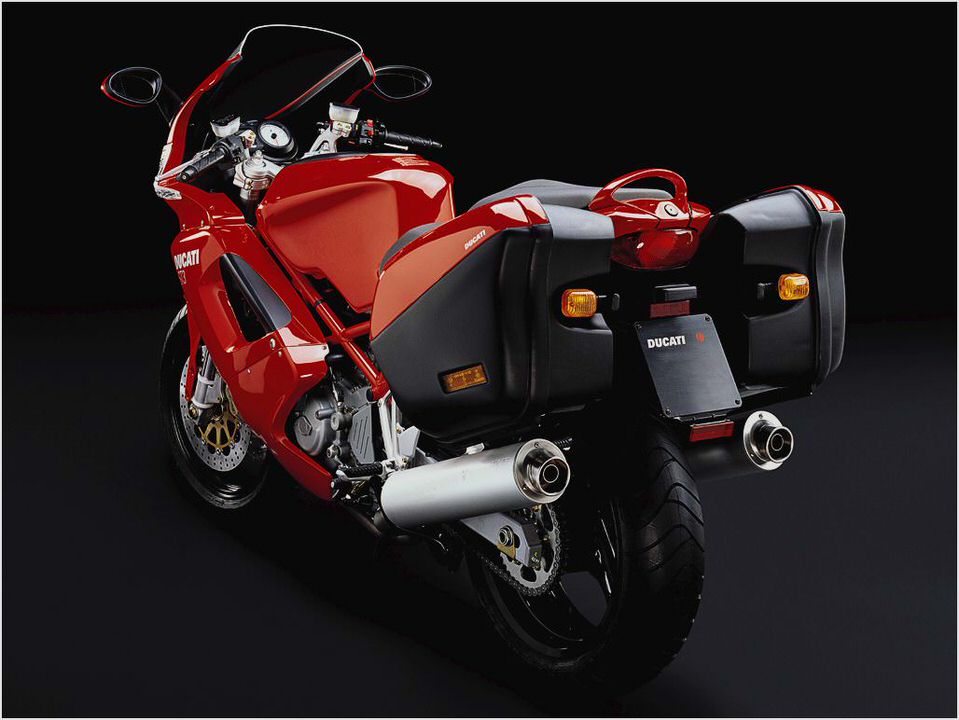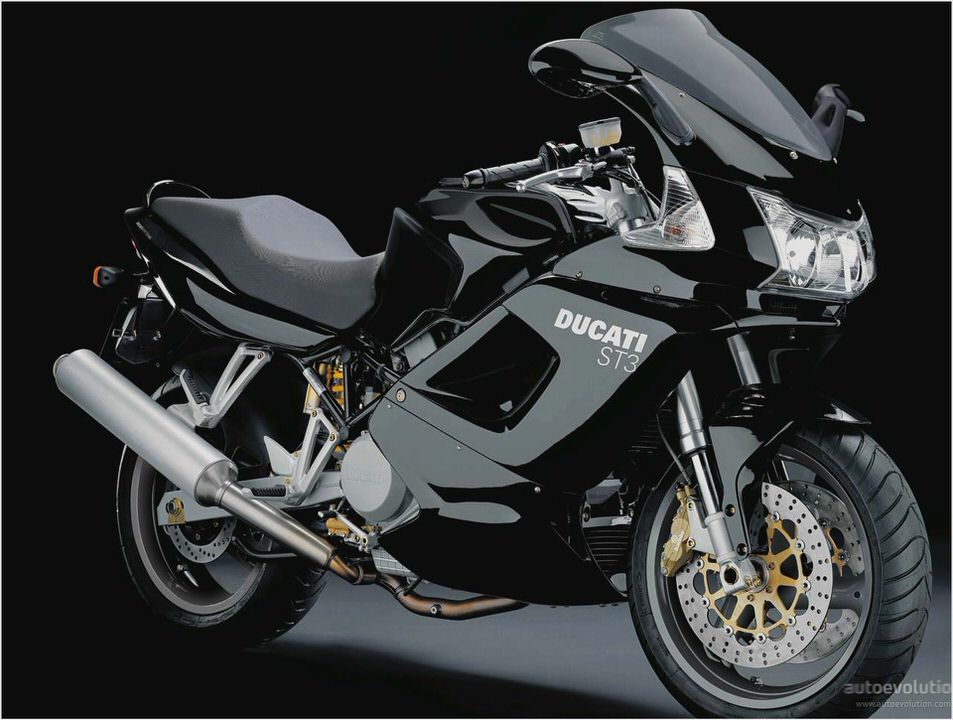
ST3 Cam Timing Changes and tuning with Techlusion/SFI – Written Feb ‘06
Updated June ’06. Std cam timing results added at bottom.
We have a demo ST3 that’s got quite a few km on it now so I thought I’d have a play with it some more. In the previous ST3 report I did the usual muffler/airbox/fuel thing to see what was in it. One thing that I noticed from those curves – the “with mufflers and air filter kit” in particular – was that the power went flat around 8,000 RPM and held pretty much at that until 10,000 RPM.
To me, that usual indicates something is restricting the package while everything else is happy to keep going.
The ST2 also does this, in its case going flat from 7,000 to 9,000 RPM. My ST2, with its ported heads, better shape valves and shorter cams with more lift, had a shape more like you’d expect (from a 2V in particular) with a smooth curve to a rounded peak, falling off from there.
From my experience with bigger exhausts on the ST2 and the 851/888 exhaust restricted doesn’t show as a flat power curve – all those bikes have had power curves that peak and fall and fitting an exhaust that makes more power simply raises the peak and the fall also.
And given the ST3 has the same airbox as the ST4 and 4S and shares its throttle bodies with the whole 748/888/916/996 range since ’93 it certainly isn’t inlet restricted.
So I tend to interpret the flat power curve as over-cammed or under-valved. Which is sort of the same thing, dependant on the specifics of the model. The cams in the ST3 are typical of late Ducati cams – being short duration (256 degrees inlet, 259 exhaust) and high lift (10.7mm inlet, 10.4mm exhaust) so it certainly isn’t over-cammed. In fact I’d say it’s fairly well cammed for the set rev limit (10,000 RPM).
It’s certainly under-valved – 2 34mm inlet valves means it has a touch more valve area than a 916 (33mm inlet valves) and less than the 4V engines of the same capacity (36mm inlet valves). Exhaust wise the 40mm valve is sort of equivalent to two 28mm valves, again too small. Plus it has 40mm header pipes, which I know cost peak power on any 4V.

However, as much as I’d love to pull the heads and fit 36/42mm valves and a 45mm header set the management would be somewhat unimpressed with the capital outlaid, so I just thought I’d play with the cam timing to see what happened to the curve with some variation. The other side of the flat power curve thing is that you can usually sacrifice some of the higher RPM flatness for more roundness lower down. And so we did.
Checking the cam timing bore a similar result to the S2R I’ve checked recently. You’d think with the adjustable pullies every model in the range wears these days they’d have the ‘as delivered’ timing somewhat under control. Again, not so. The spec on the ST3 gives a calculated inlet centreline of 114 degrees.
On this bike the ‘as delivered’ settings were 117 degrees on the horizontal and 123 degrees on the exhaust – 3 and 9 degrees retarded.
I took the opportunity to check the piston to valve clearance, of which there was quite a bit, so I decided to advance the cams while I was there to 107 degree inlet centreline. Just to se what would happen, because you never find out if you don’t try. This gave the following timing specs.
Note: I don’t actually check the exhausts given they’re on the same cam, working only off the inlet profile, so the exhaust numbers are just calculated. All timing was checked/reset with belts at the running tension of 142Hz on the Mathesis twangometer.
- Borile B450 Scrambler Pipeburn.com
- Corbin Motorcycle Seats & Accessories Ducati 999 & 749 800-538-7035
- Ducati Corse MotoGP Fans Club – Kaskus – The Largest Indonesian Community
- 2013 Lexus GS 350 F Road Test
- The Ducati Indiana – Classic Italian Motorcycles – Motorcycle Classics

